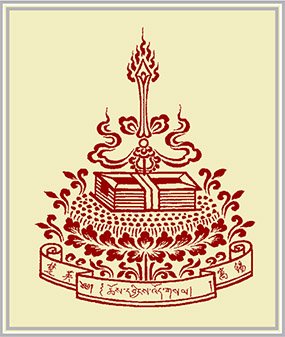佛教修學體系的建設與反思
佛教修學體系的建設與反思 (Reviewing the Teaching Systems of Buddhism)
黎日光

前言
佛法起源於印度,傳播到亞洲以至整個世界發輝異彩。於東亞地區而言,佛法約分為漢傳、南傳、藏傳三支,南傳以弘揚元始乘為主,漢傳大乘共有八宗(律宗、三論宗、淨土宗、禪宗、天台宗、華嚴宗、法相宗、密宗。),而藏傳則以金剛乘統攝大乘及密乘,揉合了印度晚期大乘佛法、密乘教法與漢地佛法(如禪宗)之精要,集各家之大成,開示即身成佛之道路。
佛法流傳至今面對應該如何現代化以應眾生之機,更要面對如何方能調伏、教化現代人而不被世俗化的問題,這是各宗各派都不能迴避的事實。要解決這二而一的問題,我們應該先反思和理順佛法本身的宗旨,緣起和演變。從中看清楚現代佛教修學的體系應該如何建設。
信念與皈依
佛陀橫空出世,於一生中,超凡入聖,示現於此五濁惡世乃能成佛,歸根究底是要眾生明白生、老、病、死,見思煩惱是苦;輪迴於六道中,其實更苦。應該修行,以求解脫,最終好像祂一樣成佛。
對安於逸樂此生的眾生,說以生死無常而驚醒之:
有生必有死,死必定至,而死時不定,死後不能帶走一針一線,只有業力隨身。每日醒來,當應感恩,因為並未一睡不起。死後由於過往生中所作、業力所驅使於六道中流轉生死,有如火宅中人!
這是生命的實相,明白了這一事實,更要知道人身難得,佛法難聞,應該對佛陀和祂教授的解脫法門生起信心,精進修行。論中之王-龍樹菩薩之《大智度論》云:「佛法大海,信為能入,智為能度」。三寶的角色是教導、警覺,開悟還從自心!而信心的出現,是對生死的恐懼、困惑驅使我們改變,例如李連杰先生在面對海嘯後的大轉變,全身投入佛事、慈善事業。眾生要找尋依怙者,如子覓母,不論元始乘、大乘和金剛乘都以佛陀、 祂的教法及其僧伽聖眾為皈依的對象,金剛乘以重視修持故以尋找心靈的導師為一切的開始—根本上師,故作四皈依、皈依上師、佛、法、僧。以上師身為僧寶、上師語為法寶、上師意為佛寶。其中更有不同層次的、對自性的皈依。密宗皈依之對象—三寶:佛、法、僧,三根本:上師、本尊、空行,三身:法、報、化—非為九種不同之實體,乃為勝義皈依之九種互相依存相連而不可分離之相面。
法身是眾生之勝義自性,自性空然具足一切功德,遍滿而非一般所能覺知。法身為一切之本—法身母也,法身猶如水晶般乃展現一切法之根本。
報身是法身之清淨、自生、不斷顯現。金剛乘行人觀其本尊為報身相,然直至修持極深且極清淨時,報身方於其心中自然顯現。報身比擬為水晶內發放虹光之潛能,為能作如是展現之能量。
化身乃覺者為利益有情從無礙大悲中生起之應化身。以凡夫無法感知法身與報身,化身相較粗顯故能為眾生之五官及意識所感知。故化身之顯現猶如經水晶發放而出之虹光。
啟發現代人作出此等思維,厭惡俗世煩惱,欣悅佛陀清淨圓滿的三身成就、法界,從而皈依佛教,生起學佛之心,是最基本的傳教工作。
發心
元始乘行人,為求從輪迴生死中解脫,發出離三界之心。這亦是三乘共有的心態。不過此心以自利為主,而佛陀在成道時觀見六道有情過往生皆為父母,故此教人發大悲心,希望眾生亦能得到解脫。如是,便稱為大乘,菩薩乘。此乘行人於世間眾生發慈悲喜捨四無量心。自利利他。除了一生一世的分段生死,需要出離解脫,佛陀教法的深義,更開顯了變易生死,也就是心念的起伏,使我們意亂情迷,於每一念中經歷六道生死。要從變易生死中解脫,便要證悟清靜圓滿的覺性,如佛所覺,因此而發的心願便是要成就清淨圓滿大悲大智的無上正等正覺,成就佛陀的果位,這菩提願心是大乘行人、金剛乘行人所必須具有的、自利利他之心。現代人的智慧高,有環保意識,危機感強,理解力亦強,對各乘的發心不難理解,只是長遠心難得,容易退轉。故這些應該用戒律和誓句來管束。在教授中隨宜傳五戒十善便十分重要了!三年、五年才傳一次菩薩戒,亦實在不足。
以戒為師
不同層次的發心,要用不同程度的戒律和誓句來規範,令這發心不會偏差或者入於錯道。元始乘以出離心為主,所依是別解脫戒:在家居士眾要守「五戒」,出家眾則有沙彌「十戒」,正學女「六法」,比丘「二百五十條」,比丘尼「三百四十八條」,重在身口二門。大乘與密乘發菩提心,四無量心,持菩薩戒,守四宏誓願。大乘戒律,以心為主,十重四十八輕,無論在家出家,發大乘長遠心者皆當受持。身口二門為利他故,可以方便開許。心則不能有絲毫損他之念。別解脫戒之受持,盡形壽;菩薩戒是直至成佛,盡未來世,當所受持,不以一生一世為限。
密教所傳或由文佛或依金剛手秘密主,戒律以「十善」為基,菩薩戒為本,每一密乘次第有相應之戒和誓句:瓶灌依「十四根本墮」,密灌守「八支粗罪」、「五方佛三昧耶戒」、更上則是與根本上師之身語意相關之「根本與支分誓句」,最終以大圓滿戒:「須臾不離菩提心」為標的。
修行次第
有了戒律誓句作為防止錯誤的規範。行者便要用種種方法來達成成佛的目標。
元始乘以出離三界為發心,所修是「四諦」、「十二因緣」、「三十七助道品」與一切與之相應的定慧方便。經論有阿含四部、俱舍論、成實論、大毘婆娑論等教法。所能達到的境界是:斷見惑、入聖位、分斷九品思惑(斷煩惱障)破我執、證四果或辟支佛果。由於發心以自了為主,未有顧及他人的解脫、所取證的是偏空涅槃,非究竟解脫,未能成佛。但是適合一些思想上要自己先解脫和對世俗事物十分厭倦的人士。
大乘行人發菩提心、所習是三學(戒、定、慧),所聞有方廣、般若、法華、涅槃、華嚴等大乘經典以及一切大乘釋論,對法、元始乘、甚至外道、世間典籍皆應聞思,通學五明。大菩薩是眾生領袖,故此要於世間知識通達,博學多聞,才
可以利濟群生,為大眾所仰慕。菸修行中,內修以六度、三十七助道品為本,外修以方便、願、力、智、四攝,依正見而行。所證是人無我、法無我、細分十地,不住生死、不住涅槃,如金剛經所云:「度脫無量眾生而實無眾生可滅度者」,以三大阿僧衹劫為期,最終成佛。發心無量,證果亦無量。大乘義理深合中國人民民胞物與之精神,發展最高是禪的境界。但是後期發展,心口不一,不能如實修行。亦不能如實證果。故此,在大乘教學中不可忽略自身的修證,教授大乘者應該以身教而言教。
密乘亦以大乘發心為本,但是方法上思路上不同。修習密乘的是大心菩薩,悲憫眾生苦惱,頃刻難安、同體大悲、反復思維,可有神通大車速運一切眾生同趣覺城。如是希求純為利他,不在自己,故此諸佛現身為說即身成佛之理,使能速疾取證佛果,利濟群生。
密乘以無上瑜伽密為最高,能即身成就:先授以「轉心四思維」淨業(暇滿難得、觀無常、怖輪迴苦及知黑白業)此又名「外共前行」。接著修「內不共前行」之「圖滿二聚」,即皈依、發心、百字明懺罪及獻曼達以積集福德智慧資糧。正行則依皈依、灌頂、傳咒、儀軌、導引、口訣之階次。其中灌頂分寶瓶灌頂、祕密灌頂、智慧灌頂、名詞灌頂四種。
第一級寶瓶灌頂依唯心見,修生起次第,成化身佛。第二級祕密灌頂依中道見,修圖滿次第,成報身佛。第三級智慧灌頂依密咒見,修圖滿次第,成法身佛。第四級大樂灌頂依大圓滿見,修大手印、大圖滿,成法界體性身佛。於悲智而外,更言力用,化度無量之眾生。
總結
佛以一音演說法,眾生隨類各得解。
由於眾生根器不同,與其各各對機的教法乃有多門,不論何乘,其知見總如上說,正知正見,離此即非佛道。佛教面對的危機是在現代化中迷失本來的使命流於世俗化,當如蓮花出污泥而不染。教化俗世眾生,還從其心意而起用!三乘體系不可互相對立;利用學校和傳播事業來傳播佛教的知見理論。建設宗教修行聚會之處所,支援在家、出家的修行人,成就大菩薩來領導民眾信佛皈依,發心學佛,修行成就。
修行人本身,要以身作則,本正則源清,發出離心、菩提心,行菩薩行,攝受正法,正法方可流傳於世。
REVIEWING THE TEACHING SYSTEMS OF BUDDHISM
By Lai Yat Kwong
Preface
Buddhism started in India and has flourished in all parts of the world. In East Asia region there are three schools of Buddhism comprising Chinese, Buddhism, Theravadan Buddhism and Tibetan, Buddhism. The Theravadan Buddhism is based on the teachings of Early Buddhism. The Chinese Buddhism of Great Vehicle has eight schools (Luzong, Sanlun Zong, Jingtu Zong, Chanzong, Tiantai Zong, Huyan Zong, Faxiang Zone, Mizong). Tibetan Buddhism is based on Vajrayana and has incorporated the essence of Mahayana, Tantrayana, Chinese Buddhism and the Great Vehicle teachings in the last era of India Buddhism as means to attain enlightenment.
The biggest challenge faced by the various schools of Buddhism is how to spread and adapt the teachings to the ordinary beings in the modern day world. To better resolve this issue teachers and leaders should first review the philosophy, the origin and development of Buddhism, then devise a system best suited to the present day society.
Faith and Taking Refuge
The sentient beings churning in the wheel of samsara should realize the suffering inflicted on them and should have faith in the teachings of Buddha. Buddha himself has shown and proved to us that one can attain enlightenment by following the correct path.
All schools whether it be Early Buddhism, Mahayana or Vajrayana, all take refuge in Buddha, His teachings (Dharma) and in the sanghas. Vajrayana emphasize in practice, so finding the right guru is utmost important in pursuing the path to enlightenment, thus the taking of refuge in guru, Buddha, dharma and sangha. In Tantrayana the refuge is in the three jewels: Buddha, dharma, sangha; three roots: guru, yidam, dakini; three bodies: dharmakaya, sambhogakaya, nirmanakaya.
| Dharmakaya: | “dharma body”, or “truth body” by which the Buddha is of the nature of the essential Absolute Reality, of “emptiness”, so called because it is “empty” of all finite characteristics. |
| Sambhogakaya: | this is the spontaneously luminous aspect of Dharmakaya. This is the semimanifest form endowed with the five perfections, perceptible only to the highly realized beings. |
| Nirmanakaya: | this is the most easily perceived subtle body which is manifested out of compassion to help ordinary beings. The supreme emanation takes birth in the world as a unique person and has special forms of body, speech and mind for the ordinary beings not in a position to reach the Dharmakaya and Sambhogakaya state of mind. |
Arousing the awareness of ordinary beings to Buddha’s path of enlightenment and their will to take refuge and learning of dharma is the primary work of the preachers of Buddhism.
For those who pursue the path of enlightenment just for the benefit of themselves would follow the teachings of Early Buddhism. For people who want to benefit themselves as well as others would follow Buddha’s path of Mahayana. Mahayana practitioners would practise bodhicitta and the Four Immeasurable Thoughts in order to reach the state of enlightenment. Realising the state of detachment and cessation of all sufferings to the state of Pure Perfection are the objectives of all Mahayana and Vajrayana practitioners. It is not difficult for the present day people with their wisdom to understand all these, but persistence in pursuing the path is a different matter altogether. Therefore it is necessary to institute vows and pledges for the practitioners, thus the Five Vows, Ten Virtues and Bodhisattva Vows are very important.
Vows as Teacher
Each category of practitioners follows its own set of vows: laymen the 5 vows, for ordained practitioners, novice monks the 10 vows, probationary nuns the 6 precepts, monks the 250 precepts and nuns the 348 precepts; for Mahayana and Tantrayana practitioners bodhicitta, the Four Immeasurable Thoughts, the Bodhisattva Vows and Four Great Vows of Bodhisattvahood.
In Tantrayana vows and pledges, the Ten Virtues is the base and the Bodhisattva Vows is the root. Each stage has its own vows and pledges to keep: vase initiation the 14 Root Downfalls; tantric initiation the 8 Transgression and the 5 family Buddhas’ Samaya; the higher initiation the Rot and Supplementary Vows correlated to the body speech and mind of the guru and ultimately the Bodhicitta Vow of Dzogchen.
Steps to the Path of Enlightenment
With vows to keep them straying from their path, practitioners will pursue different methods to attain Buddhabood.
Followers of Early Buddhism will practice the Four Noble Truth, Twelve Limbs of Dependent Origination, Thirty – seven Aids to Enlightenment and all the related methods and they also study various Buddhist texts as means to attain the stage of four abiders or Pratyekabuddha. As these practitioners in their path of practice do not help others to benefit and seek detachment they can only attain lesser nirvana and not ultimate detachment, thus are not in a position to attain Buddhahood.
Followers of Mahayana will practice Discipline, Meditation and Wisdom and study all Mahayana Buddhist texts including but not limited to texts of Correct and Entensive, Wisdom, Dharma-flower, Nirvana, Flower Ornament, and also have knowledge of Early Buddhism and even other religions like Hindu, so as to be thoroughly conversant with five sciences. Bodhisattvas are leaders of the sentient beings and need to have broad knowledge in all aspects of subjects to be able to convert them and free them from detachment.
Followers of Tantrayana start off with Bodhicitta, with the aim of benefiting others and not themselves, thus can attain the state of Buddhahood.
In Tantrayana the Highest Yoga Tantra is the ultimate practice and can attain enlightenment in one lifetime. In the path, practitioners are taught the four thoughts that turn the mind, the difficulty to obtain human life with freedom and advantage, impermanence of life, the suffering of samsara and the principle of cause and effect. They are also taught the methods of gathering virtues, like taking refuge, bodhicitta, repentment by chanting the Hundred Syllable Mantra. Then they follow the steps in practice, namely, taking refuge, receiving initiations, learning and chanting mantra, practicing sadhana, receiving instructions and receiving special secret instructions from the guru. Initiation comprises of vase initiation, secret initiation, wisdom initiation and noun initiation and each of this initiation will attain the state of nirmankaya, sambhogakaya, dharmakaya and the Buddha state dharmakaya respectively.
Conclusion
The crisis we face is how to spread, sustain and adapt the dharma in this evil world stained by the five defilements. First of all it is necessary for the three schools of Buddhism to unite and complement each other in spreading the dharma by focusing on the training of the mind. By establishing teaching centers, training laymen and ordained persons to become leaders to lead the ordinary people in taking refuge, learning and practicing Buddhism with the ultimate aim of attaining enlightenment. The teachers and practitioners by setting good example themselves for the ordinary people, Buddhism then can continue to flourish in the world.


